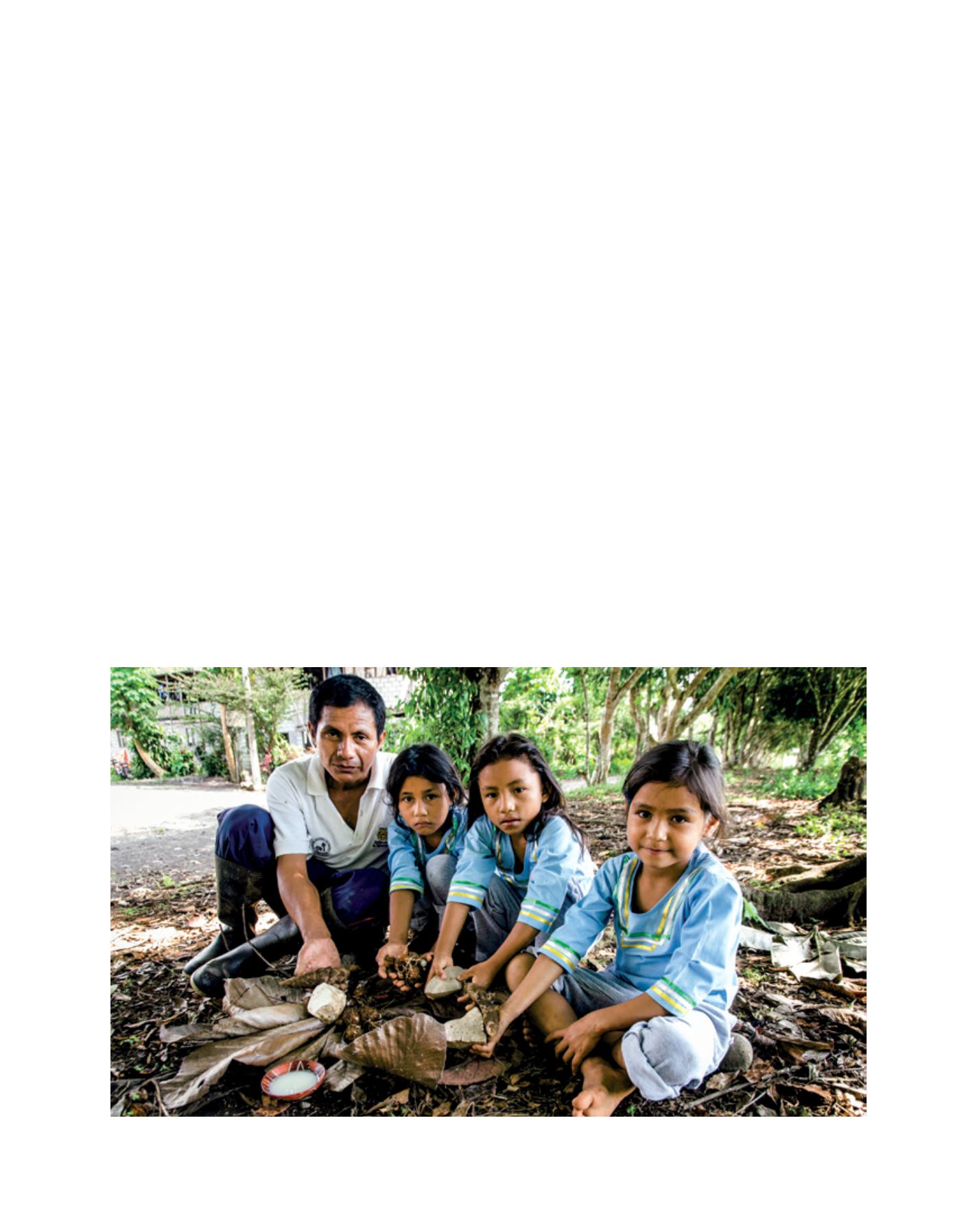

[
] 83
Above all, family farming involves more than one gender
(again referring to the grammar categories of male and
female) and more than one generation. Now as in the past,
family farming uses the knowledge, abilities and contri-
butions of both men and women. It also involves young
people, allowing them to grow up with respect for nature
and feeling part of it.
As its objective is to produce a harvest to feed the family,
it cultivates several species. Several varieties of each species
are usually cultivated and each variety, grown from seeds
improved using traditional methods, contains high vari-
ability within each population. This allows correspondingly
high adaptability to climatic conditions: if a species is
damaged by rain, a harvest is still produced thanks to crops
needing a lot of water; if a variety is destroyed by a parasite,
others will show they are resistant; even when the variety
is affected by some natural event, it does not completely
die but it is always possible to save a few individual plants
(which can form the basis for further genetic improvement
as these individuals have shown they can resist the adverse
event). In any case seeds obtained from the harvest are suit-
able for re-sowing and the farmer can renew resources, the
basic capital, with each harvest.
Family farming is not specialized: the production of a
traditional farm is always diversified. It involves the coex-
istence of its major focus on crops and livestock with sale
and processing activities, as well as a whole range of social
and environmental issues such as education, the protection
and maintenance of the landscape, and the defence of wild
and domestic plant and animal biodiversity.
It has numerous objectives: its main aim is not the market
but feeding the family and animals, maintaining soil fertil-
ity, creating a pleasant landscape which can attract visitors
as a result of its diversity (monocultures are not attractive
and in any case do not allow agritourism activities), provid-
ing social opportunities for the local community, as well as
for those who are not part of it.
It also has many ways of accessing the market, which is
almost always the nearest one, through direct sale at the
farm gate, local markets and collaboration with purchasing
groups. Selling in the neighbourhood also enables a link to
be maintained with local culture: those belonging to the
same culture are better able, as consumers, to judge the
quality of the product.
Last but not least, family farming involves different types
of consumers: elderly people with links to small-farming
culture, young people seeking reliable information, envi-
ronmentalists who want to be consistent in their behaviour,
food connoisseurs who know that quality starts in the fields
and, before this, in the choices that farmers make. They are
all united in their appreciation of food.
Family farming is an integrated system. Where possible
it reuses waste and by-products for other stages of produc-
tion or to start new initiatives. This means it has a reduced
impact on global resources and lowers production, as well
as environmental costs.
And when we say ‘family farming,’ we are talking about
many types of agriculture which can accommodate adjust-
ments and additions, and accept suggestions from different
cultures including industrial culture. It makes the most of
Image: Paolo Demetri
Family farming uses the knowledge, abilities and contributions of men, women and young people, who grow up with respect for nature
D
eep
R
oots
















